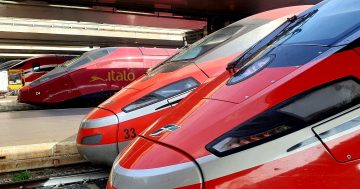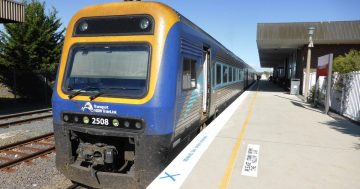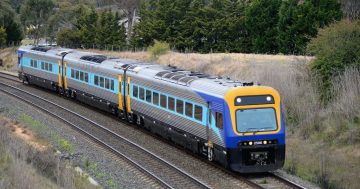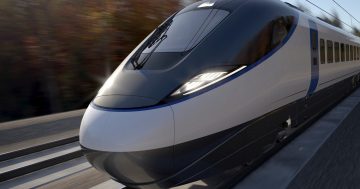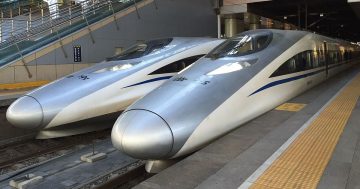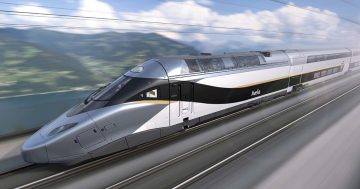
Could the agonisingly slow train trip from Canberra to Sydney really be cut down to two hours with high-speed rail? Photo: File.
Imagine jumping into a train in Canberra and arriving in Sydney within two hours.
That could be a reality according to FastTrack Australia’s new implementation plan for high-speed rail from Sydney to Melbourne.
The report singled out a high-speed rail section from Canberra to Goulburn and Yass as a “high priority”, which could serve as a guinea pig to prove the concept would work across the east coast.
“The Canberra section of the high-speed rail line is largely a self-contained project that is worth doing in its own right,” it stated.
“It can be treated as a ‘no regrets’ project. It has good benefits that its success will not be determined by the addition of future stages, and is not dependent on the completion of the full Sydney-Melbourne high-speed line.”
The argument for high-speed rail to the nation’s capital is nothing new, with a Commonwealth High Speed Rail Authority set up in the second half of last year to investigate options, and $1 billion pledged by Labor before the 2019 election.
But this report’s authors, Dr Garry Glazebrook and Dr Ross Lowrey, argue it shouldn’t be built as a standalone system, but rather as an upgrade to the existing network, progressively rolled out in stages to connect regional cities along the line.
While the Sydney to Melbourne corridor is the ultimate goal, they wrote starting in Canberra would both prove the concept could work and open the potential for “dramatic growth” of the city’s population.
They envisioned the line would start near Canberra Airport (where it could link up with the proposed light rail to Civic), following the Majura Parkway out of the Territory, and then branching off after Gunning to Yass in the west and Goulburn in the east.
“The line opens two new areas for expansion of the urban area north of Canberra that need faster rail connections to be considered as suburbs of Canberra,” the report stated.
“It also frees the existing rail line to Bungendore, allowing Canberra’s light rail to be expanded to support a third proposed urban renewal area (Kowen), as well as connecting the nearby town of Bungendore.”
The authors said constructing this section of track would disprove arguments that Australia’s vast distances between destinations and dispersed populations meant high-speed rail wasn’t economically viable.
“While studies can support or dispel these hypotheses, they cannot be completely proven until tested with the actual implementation of high-speed rail,” the report stated.
“This project encompasses both aspects needed to show that high-speed rail (faster connections) promotes regional growth and that it has to be implemented as an upgrade to the existing network: the new high-speed track connects both Goulburn and Yass to Canberra, creating the opportunity for growth and development in each city.
“This limited section of high-speed track will be integrated with the existing network in order to add new services (including ones that will extend beyond this track) and also improve the performance of existing services operating between Goulburn and Yass.”

The report suggests new business precincts for Canberra could be created along the high-speed rail line. Photo: FastTrack Australia.
It also suggested Goulburn and Yass could be used to explore other ideas and then be used as a template for the development of other regional cities as they’re connected to the high-speed network.
It expects the line would ultimately carry very fast Canberra-Sydney and Canberra-Melbourne services, potentially to speeds of 350 km/h.
Currently, the average speed of the Canberra to Sydney trip is 70 km/h.
But the report warned the Federal Government would need to come to the table in a big way to make it all happen.
“The high-speed line crosses the border between NSW and the ACT, which makes it national infrastructure,” it said.
“In fact, it is unlikely to proceed without federal leadership, backed by both the ACT and NSW governments.”
It’s something the ACT Government is keen to make a reality.
Chief Minister Andrew Barr said his government had “very little” money it could put towards this kind of project, but it’s something they had been investigating.
“In 2020 the ACT Government provided $1 million for investigations into the corridor to support development of the Transport for NSW Strategic Business Case, undertaking a series of technical inputs to their work,” he said.
“Improvements to the Sydney Canberra rail were the first joint initiative to be listed on Infrastructure Australia’s Infrastructure Priority List.”
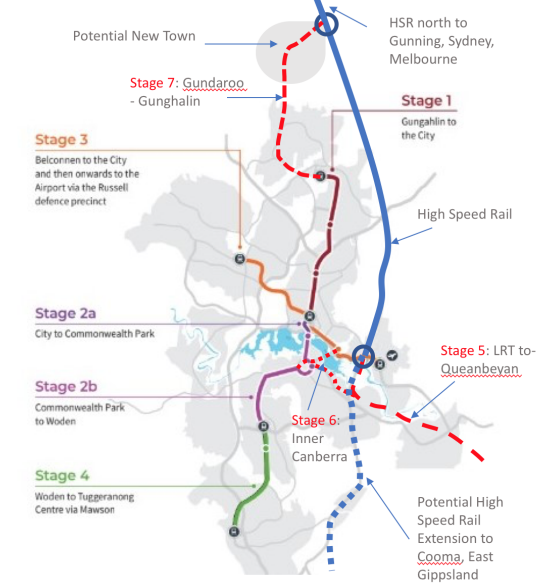
It’s suggested the high-speed rail line should follow the Majura Parkway and terminate near the airport. Photo: FastTrack Australia.
Mr Barr said improvements could also be made to the existing train line which runs to Kingston if the project became a reality.
“Improvements to this line could commence almost immediately [once Commonwealth] funding is allocated,” he said.
The Federal Government announced on Friday (24 February) it has started its search for board members to run the High Speed Rail Authority to advise, plan, develop and oversee the construction and operation of a new train network along the eastern seaboard.












